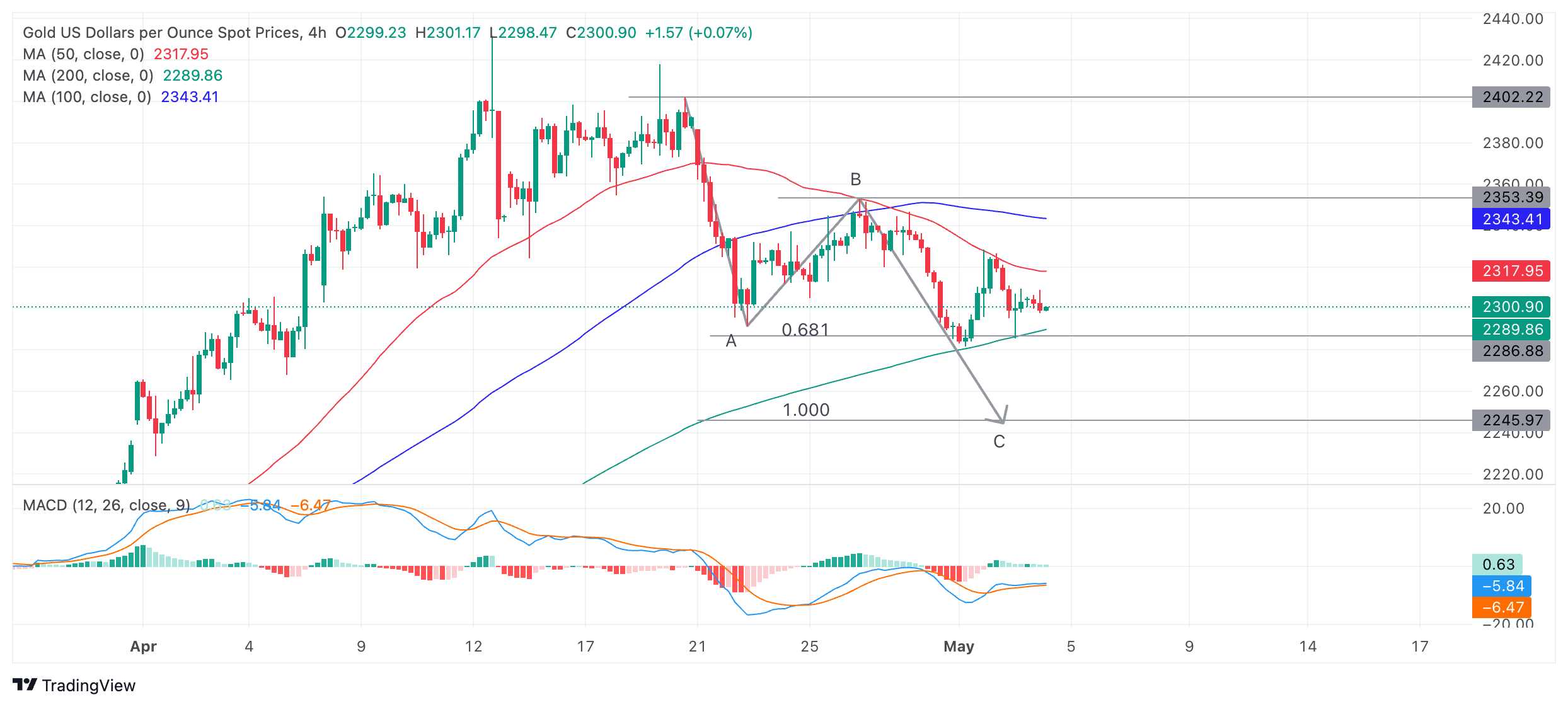- Gold price rebounds following the release of a below-expectations US Nonfarm Payrolls report.
- The data copmes out lower-than-expected across the board, with payrolls rising 175K versus the 243K forecast.
- Average Hourly Earnings, the Unemployment Rate and Average Weekly Hours worked also all undershoot expectations.
The Gold price (XAU/USD) recovers after a soft start on Friday, rising up to around $2,310s – an over half a percent gain – immediately after the release of US Nonfarm Payrolls (NFP) data undershot analysts’ expectations. The data suggests the Federal Reserve (Fed) may be more inclined to cut interest rates sooner than previously expected, and lower interest rates make Gold more attractive to investors because it is a non-yielding asset.
Gold price surges after Nonfarm Payrolls miss expectations
The US NFP report showed 175K new workers joined the ranks of the employed in April, which was below ther 243K expected and the upwardly-revised 315K of the previous month, according to data released by the Bureau of Labor Statistics.
Average Hourly Earnings came in softer at 3.9% YoY and 0.2% MoM, compared to estimates of 4.0% and 0.3%. This was also lower than the 4.1% and 0.3% of the previous month. The slight decline in the pace of earnings growth suggests lessening inflationary pressures. This in turn may increase the chances that the Federal Reserve (Fed) will cut interest rates sooner than anticipated. The expectation of lower interest rates weighs on the US Dollar (USD) as it reduces capital inflows, and the US Dollar Index (DXY) fell over half a percent after the release.
Other data in the NFP report showed that Average Hours Worked fell to 34.3 from 34.4 previously and the same expected, probably reflecting an increase in part-time work, usually interpreted as negative by economists.
The Unemployment Rate ticked down to 3.9% from 3.8% previously when no change had been forecast. The participation rate remained the same at 62.7%.
Technical Analysis: Gold price tracks sideways
Gold price (XAU/USD) rebounds on the 4-hour Chart. It has stopped declining after meeting the conservative requirement for completing its bearish Measured Move price pattern at the Fibonacci 0.681 price objective for wave C, at $2,286.
XAU/USD 4-hour Chart

The Measured Move, a zig-zag type pattern, could still unfold if wave C has lower to go. Although it has met its conservative objective at the 0.681 Fibonacci target, it could still fall to a second target at the point where wave C equals the length of wave A. Alternatively, it may have finished unfolding altogether – both outcomes are possible.
Directionally, Gold is in a bit of a no-man’s land: a break below the 0.681 Fibonacci target lows at $2,285 would be needed to confirm more downside to a target at $2,245 (1.000 or where A=C).
Alternatively, a break above the cluster of Moving Averages and the peak of wave B at around $2,350 would potentially usher in a new more bullish environment. This could then see a retest of the $2,400 highs.
Additionally, the trend for Gold price is up on both the medium and long-term charts (daily and weekly), overall supporting the outlook on lower time frames.
Economic Indicator
Nonfarm Payrolls
The Nonfarm Payrolls release presents the number of new jobs created in the US during the previous month in all non-agricultural businesses; it is released by the US Bureau of Labor Statistics (BLS). The monthly changes in payrolls can be extremely volatile. The number is also subject to strong reviews, which can also trigger volatility in the Forex board. Generally speaking, a high reading is seen as bullish for the US Dollar (USD), while a low reading is seen as bearish, although previous months’ reviews and the Unemployment Rate are as relevant as the headline figure. The market’s reaction, therefore, depends on how the market assesses all the data contained in the BLS report as a whole.
Read more.


























